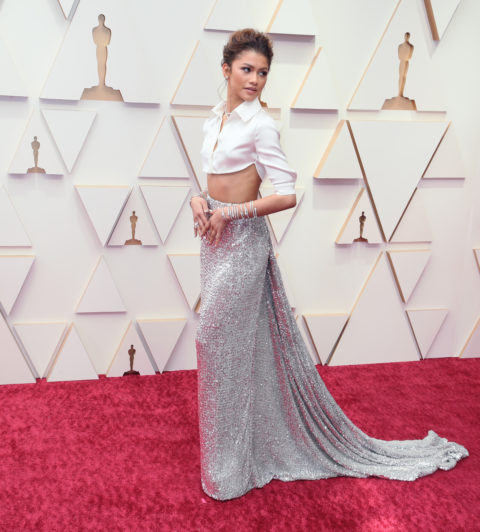TV’s ‘What Not to Wear’ Had Some Harmful Fashion Rules

In 2023, I am ditching “desirability.”
Expanding up in the 2000s, I been given my fashion training nearly completely from TLC’s hit clearly show, What Not to Put on. Functioning from 2003 to 2013, the makeover sequence was massively influential thanks to its often-stylish, brutally blunt hosts: stylists Stacy London and Clinton Kelly.
Every single episode spotlighted a single contestant — normally a woman — who had been submitted by people in her existence to endure a wardrobe revamp. Following staying ambushed (usually in entrance of a significant crowd) and agreeing to participate, she would then have to relinquish the contents of her closet and her trend thoughts to be beautified by the all-being aware of hosts. Yes, to be nominated for What Not to Wear was to study that just about everyone you adore thinks your overall look requirements “fixing.” Guided by a set of stringent guidelines, each individual episode finished with contestants seeking nothing at all like they did in the commencing.
It was a maniacal masterpiece. About the program of a ten years on the air, What Not to Put on’s simple enjoyment aspect thrived off a premise of formulaic episodes with rigid fashion rules. As I watched, I impulsively agreed with London and Kelly when they dished out quippy garments insults and recited procuring edicts in the identify of dressing far more “flattering.” I was drunk off the power of pretending to be a pseudo-stylist, and along the way, I was concurrently burying my potential to sort my very own outfit thoughts.
It ought to be observed that this was a time when the fashion entire world was overwhelmingly defined by thinness. Worst-dressed lists were being even now commonly accepted and body shaming in mainstream media went unchecked. It would feel that in 2023, we have come a long way — Stacy London has since shared her very own grievances with the present — but the truth is that a lot of these “rules” are still deeply ingrained in the way we imagine about our wardrobes, and in transform, our bodies.
Many classic outfit faux pas are rooted in fatphobia, ageism, racism and ableism, states Monique Black, a design and manner influencer. “I’m a significant proponent of sporting whatever the hell you want,” she tells me. This point of view arrived immediately after yrs of unlearning the dressing dogmas of trend authorities like What Not to Dress in. “[Younger] me would be stunned that I have on crop tops or [show] my back again rolls,” she describes. But with the resurgence of Y2K and the escalating prediction that “thin is in” all over again, it is progressively essential to challenge damaging elegance specifications. For the sake of journalism, I revisited the display and its quite a few trend falsities. Right here are the dusty manner guidelines I’m unlearning in 2023.
Rule #1: Outfits must be “flattering” for your entire body form
In December 2022, TikTok creator @jackies.residence went viral with a video clip titled, “quit only donning flattering dresses.” The submit sparked a pattern of movies describing how rejecting sartorial guidelines is the important to obtaining private model. Even though the phrase “flattering” is generally employed as a justification for dolling out manner information, it’s also perceived as a thinly veiled way of indicating that larger sized bodies really should aspire, higher than all else, to seem smaller sized.
“For the longest time, I only wore jeans and a entire body match or a black prime because I felt like I desired to like demonstrate to the environment that I… experienced a shape. I have generally been curvy so that was a primary precedence to me,” states creator Hannah Pleasure in a TikTok video, adding that this strategy stifled her creativity in the extensive run. “I promise there is a way to put on stylish clothes and not often check out to look your thinnest or seem the most ‘flattering’ and the most ‘shapely.’” A person of the top rated comments: “I blame What Not to Have on.”
A renowned ritual on the present was the infamous 360-degree mirror scene, in which a contestant would stand surrounded by their reflection although obtaining their outfit decisions picked aside. The criticism was pretty much normally the very same — that they weren’t dressing in a “flattering” way. But what does that genuinely imply? “I really feel like ‘flattering’ is used to cover, maneuver close to or protect up the parts of your system that modern society would not like — like back rolls or extend marks,” Black suggests, adding that she often views the phrase as code for “something that hides your overall body in an satisfactory way [and] would make your physique conform more toward thinness.” At the root of this rule is the implication that there’s an best physique that we ought to all aspire to have. Not only is that untrue, it is just simple dull.
Rule #2: Clothing have an expiration day
I grew up wondering my outfits experienced an intrinsic clock a finite time in the manner lifecycle before turning out to be decidedly uncool (read: cheugy). This frame of mind, unsustainable as it is, has lengthy been an accepted normal inside of quite a few superior-manner areas. Situation in level: in its place of instructing contestants to fashion the parts they already experienced, What Not to Dress in often replaced entire wardrobes with brand-new goods.
All signals of quirky individuality had been erased to give subjects a cookie-cutter enterprise informal seem. As these, contestants would trade their “bad” dresses for trendy items that had been emblematic of the period (imagine: chunky necklaces, assertion belts, ultra-skinny jeans). The irony listed here is that now all those really pieces, as with all cyclical trends, are regarded outdated. The lesson to be learned? Wear a thing if you like it, not only mainly because it’s in vogue.
Rule #3: Costume for your age — and gender
Time 12 episode 2 follows Lizz, a mom whose wardrobe is considered either “frumpy” or “over-pretty.” Though she loves her revamped seem in the finish, I simply cannot aid but discover the takeaway message: girls previous a particular age only appear fantastic if they are strategically accentuating their figures devoid of displaying far too substantially pores and skin. The detail is, as females get older, there seem to be to be significantly rigid rules for dressing the “right” or “wrong” way. These recommendations only boost insecurities, argues Black. “What other way can you regulate a successful woman who helps make her have cash, has her have existence, has her very own dwelling? You choose at the just one detail she cannot stop, which is ageing.”
In the incredibly following episode, a contestant named Courtney is instructed, “you can not definitely see no matter if you are a boy or a lady beneath [your clothes].” She’s built to throw absent her camouflage jackets and pepper her wardrobe with corporate-proper attire. But immediately after her transformation is complete, she appears to be like visibly unpleasant and form of unhappy — not empowered. Guidelines of age-appropriate femininity, be long gone!
https://www.youtube.com/observe?v=LYsqlvaNJzs
Rule #4: “Weird” is poor
Though some of the show’s subjects had been openly uninterested in manner, other people had unique individual designs that created them satisfied — but that were being considered odd. This really weirdness, however, can basically be the vital to acquiring particular design and style.
Today, sample-clashing, color-blocking and at the time-maligned shapeless silhouettes are staying celebrated. With the viral level of popularity of the “weird lady aesthetic” and up to date kooky fashion legends like Emily Cooper, there’s a developing motion to honour your interior little one alternatively of catering to the views (and eyes) of others. But it still requires get the job done to master this way of thinking. “It was not until finally I taken out myself from the require to be desirable all the time that I finally began developing a sense of private style,” states TikTok creator Simi Muhumuza.
Abandoning desirability is the to start with stage in the direction of self-acceptance, suggests Black. To do so, she suggests concentrating on the elegance of a garment as opposed to the way it appears to be on you. “When you store for the enjoy of vogue and the love of clothes, or just the satisfaction of treating on your own or including another piece to your wardrobe, it can take away [the focus from] your human body.”
At the stop of the working day, rigid styling principles established exclusionary limitations on who can and cannot participate in style. Though What Not to Put on initially piqued my desire in clothes, it also regrettably taught me to base my outfits on formulas rather of thoughts. But modern society has outgrown the makeover style. And as I’ve arrive to master, there is ability in not making an attempt to be palatable. So, in 2023, I take care of to do just that.





.png)
